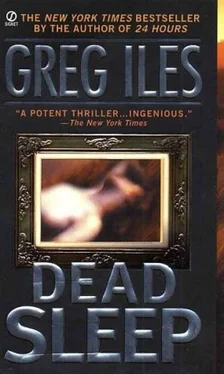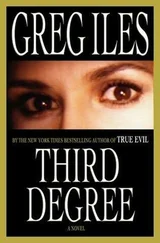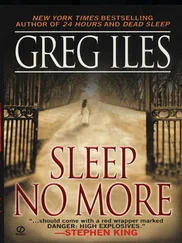“I don’t know your bra size.” His face is absolutely serious.
“Do you want to?”
“I think I’m up to investigating the question.”
“Given adequate time, you mean.”
“Naturally.” He takes a sip of juice and wipes his mouth with his napkin. “How much time do you think that would be?”
“At least four hours. Uninterrupted.”
“We won’t get four hours tomorrow.”
“And we don’t have it tonight.”
He looks again at Wendy, who’s making a point of not looking at us. “No, we don’t. The task force is meeting right now in the Emergency Operations Center. I have to get back, and I don’t know when I can get out of it.”
“Speaking of that, you told de Becque you’re having trouble matching the abstract faces in the paintings to victims, right?”
Kaiser nods. “Eleven victims, nineteen paintings. Two major problems. There must be victims we don’t know about. Murders or disappearances that don’t match the crime signature exactly. Maybe they were hookers or runaways rather than society women, and nobody reported them missing. Maybe we’ve actually found their bodies, but since they match the more abstract paintings, we can’t tell. But a Jefferson Parish detective and I have gone over every homicide and missing person in New Orleans for the past three years, and we only have a handful of possibles, none very likely.”
“How many paintings have you matched to known victims?”
“Six definitive matches out of eleven. Two strong probables. But the faces are so vague in some of the paintings, or so distorted, that we just can’t get anywhere with them.”
“Who do you have working on them?”
“The University of Arizona. They’ve done great work for us in the past. Digital photo enhancement.”
“But not this time?”
“Not so far.”
“I think that’s because what you want in this case isn’t really photo enhancement. The distortions you want to correct aren’t the result of blur or a lack of resolution that masks reality. They’re distortions created in the mind of a human being, perhaps an insane one. They may have little or no correspondence with reality.”
Kaiser watches me with an unblinking gaze. “What do you suggest?”
“I know some photographers who work exclusively in the digital domain. I don’t want to mention names, but I recall one of them talking about a system that was being developed for the government – the CIA or NSA or somebody -for satellite photo interpretation. Its purpose was to try to bring visual coherence out of chaos. He couldn’t say much about it, and I wasn’t that interested, but I remember that much.”
“How long ago was this?”
“Two or three years.”
“Did this system have a name?”
“At the time he called it Argus. You know, the mythical beast with a hundred eyes?”
“I’ll ask Baxter to talk to the other acronym agencies and see what he can find out.”
“Okay. There’s my contribution. Is the Bureau buying this breakfast?”
“I think the Bureau can afford it.” Apropos of nothing, Kaiser reaches out and touches my hand, and the thrill that races up my arm sets an alarm bell ringing in my brain. “Look,” he says, with another glance at Wendy, “why don’t we-”
I pull back my hand. “Let’s don’t push it, okay? It’s there. We know it’s there. Let’s see what happens.”
He nods slowly. “Okay. It’s your call.”
We eat the remainder of our meal in silence, watching each other and the gentle comedy of late diners around us. I’m grateful that he doesn’t feel pressured to make small talk; it bodes well.
After he pays the check, he leads me over to Wendy and thanks her for the time she gave us. He speaks and moves with such professional detachment that Wendy seems to take heart. This is no reflection on her intelligence. All of us see what we want to see until we’re forced to see otherwise.
Outside, amid a throng of partying Tulane students, Kaiser bids us farewell and leaves for the field office. Wendy doesn’t talk much on the way back to her apartment, and I’m glad for it. As much as I like her, I think tomorrow would be a good day to find a hotel.
I’m sitting in a cramped FBI surveillance van on the campus of Tulane University, home of the Green Wave, a fitting name for teams whose campus has the verdant look of a garden, even in October. The oaks are still in leaf, the palms flourishing, and the lawns shine like freshly mown meadows in the sun. Twenty yards away from the van stands the Woldenberg Art Center, a stately old brick complex that houses the university’s art departments and the Newcomb Art Gallery.
Thirty seconds ago, John Kaiser and Arthur Lenz went through the doors of the gallery to meet Roger Wheaton, the artist-in-residence at the university. Dr. Lenz is wearing a concealed microphone and transmitter, which he tests repeatedly as he walks deeper into the building.
“Arthur has no faith in technology,” says Baxter, who is sitting beside me, wearing a headset mike. “By the way, I checked on that computer program you told John about. Argus. It does exist. The National Reconnaissance Office uses it for satellite photo interpretation. It’s been crunching on digital photos of the unidentifiable Sleeping Women for the past two hours.”
“Has it come up with anything?”
Baxter gives me a “keep your chin up” smile. “They tell me it’s been spitting out faces that look like Picasso drew them. But they’re going to keep running it.”
“Maybe we’ll get lucky.”
“I also got you set up at a hotel. The Doubletree, just down the lakefront from the field office. They think you’re with a corporation, so don’t mention the Bureau.”
“No problem. I appreciate it.”
The interior of the van is uncomfortably warm, even at nine a.m. One reason is the outside temperature, another body heat, and compounding them convection from the electronic equipment lining the walls of the Econoline. There’s a battery-powered fan perched on a cooler filled with dry ice to provide relief, but its rattling blades barely cut the dense atmosphere.
“Before there were female agents,” says Baxter, “we stripped down to our shorts in these things.”
“Don’t hesitate on my account. I’ll strip myself if I have to stay in here much longer.”
Baxter laughs. At his request, I’m wearing a skirt suit and heels, so that I’ll look more feminine to the suspects when I go in. A female field agent was dispatched to Dillard’s department store this morning with a list of my sizes. Getting the store to open early was apparently no trick for SAC Bowles, but trying on the various selections caused me to miss most of this morning’s strategy meeting.
“How much notice of this interview did Wheaton get?”
“An hour. The president of the university handled it. He’s deep into CYA mode. If a university employee turns out to be behind the disappearance or death of a student, the legal exposure would be considerable. He told Wheaton to cooperate with us, even though the idea that he could be involved in any crime was patently absurd. He didn’t mention the sable brushes or the Sleeping Women, only that we had evidence connecting the Tulane art department to a murder.”
“Wheaton had no problem with being questioned?”
“Not so long as we talked to him while he’s working. He’s apparently obsessive about his work schedule.”
“We’re going in,” says Lenz through a crackle of static.
Baxter checks the meters on an ADAT to make sure the psychiatrist’s words are being recorded.
A knocking sound reverberates from the small monitor speaker mounted on the console before us. Then the sound of a door opening.
Читать дальше
Конец ознакомительного отрывка
Купить книгу












